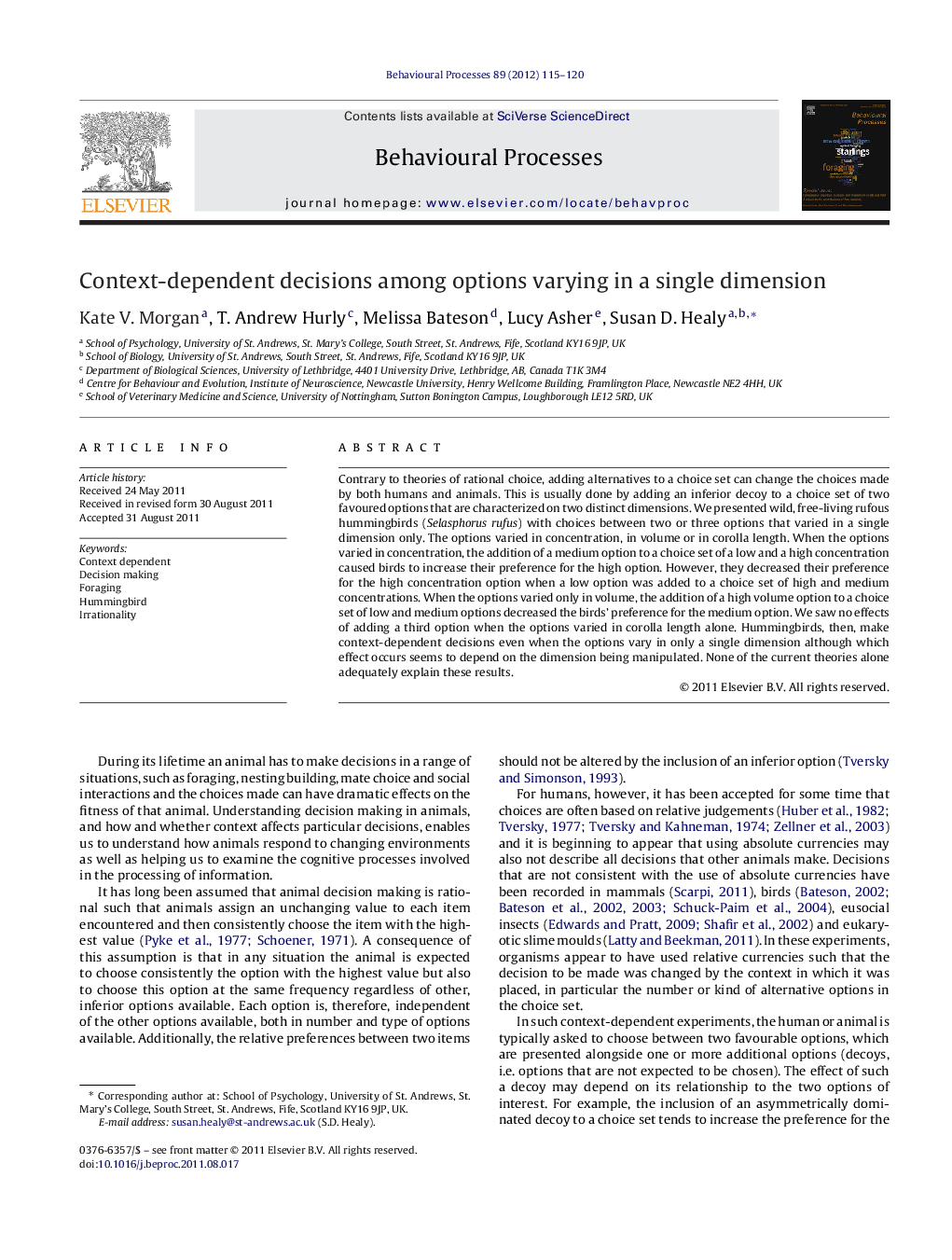| Article ID | Journal | Published Year | Pages | File Type |
|---|---|---|---|---|
| 2427007 | Behavioural Processes | 2012 | 6 Pages |
Contrary to theories of rational choice, adding alternatives to a choice set can change the choices made by both humans and animals. This is usually done by adding an inferior decoy to a choice set of two favoured options that are characterized on two distinct dimensions. We presented wild, free-living rufous hummingbirds (Selasphorus rufus) with choices between two or three options that varied in a single dimension only. The options varied in concentration, in volume or in corolla length. When the options varied in concentration, the addition of a medium option to a choice set of a low and a high concentration caused birds to increase their preference for the high option. However, they decreased their preference for the high concentration option when a low option was added to a choice set of high and medium concentrations. When the options varied only in volume, the addition of a high volume option to a choice set of low and medium options decreased the birds’ preference for the medium option. We saw no effects of adding a third option when the options varied in corolla length alone. Hummingbirds, then, make context-dependent decisions even when the options vary in only a single dimension although which effect occurs seems to depend on the dimension being manipulated. None of the current theories alone adequately explain these results.
► Wild hummingbirds made choices between options that varied in a single dimension. ► Binary and trinary choice sets were presented with one dimension manipulated. ► Either corolla length, volume, or concentration of sucrose was manipulated. ► Choices were context-dependent in volume and concentration. ► Choices are not always rational even when options are easy to compare.
